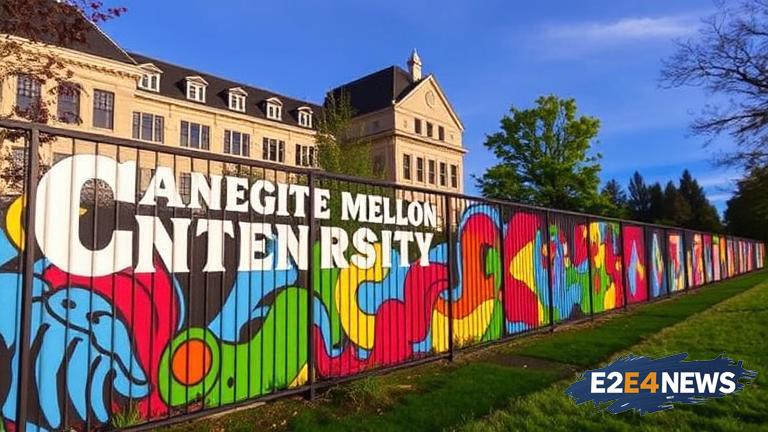Carnegie Mellon University has recently installed a new fence on its campus, which has sparked a debate among students, faculty, and staff. The fence, which is approximately 6 feet tall, has been erected around the perimeter of the university’s property. According to university officials, the fence is intended to improve safety and security on campus. However, some students have expressed concerns that the fence will make the campus feel less welcoming and more restrictive. Others have argued that the fence is necessary to prevent unauthorized access to the campus and to protect students and faculty from potential harm. The university has stated that the fence is part of a larger effort to enhance campus security, which includes the installation of new security cameras and improved lighting. Despite these efforts, some students have expressed skepticism about the effectiveness of the fence in preventing crime. They argue that the fence will not deter determined individuals from accessing the campus and that it will instead create a sense of unease and mistrust among students. The debate over the fence has also raised questions about the balance between safety and freedom on campus. Some students have argued that the fence is an overreaction to concerns about safety and that it will undermine the sense of community and openness that is essential to the university’s mission. Others have countered that the fence is a necessary measure to protect students and faculty from harm and that it will not significantly impact the campus culture. The university has stated that it will continue to monitor the situation and make adjustments as necessary. In the meantime, students and faculty will be watching to see how the fence affects campus life. The debate over the fence has also sparked a broader discussion about the role of security measures in higher education. Some experts have argued that universities should prioritize creating a sense of community and trust among students, rather than relying on physical barriers to prevent crime. Others have countered that universities have a responsibility to protect their students and faculty from harm, even if it means implementing measures that may be perceived as restrictive. As the debate over the fence continues, it is clear that there are no easy answers. The university will need to carefully consider the concerns of students, faculty, and staff as it moves forward with its security plans. Ultimately, the goal should be to create a safe and welcoming environment that supports the academic and personal success of all members of the university community. The installation of the fence is just one part of a larger conversation about safety, security, and community on campus. It remains to be seen how the fence will impact campus life and whether it will achieve its intended goals. The university’s decision to install the fence has also raised questions about the impact of security measures on the mental health and well-being of students. Some students have expressed concerns that the fence will create a sense of anxiety and unease, particularly among students who are already struggling with mental health issues. The university has stated that it is committed to supporting the mental health and well-being of its students and that it will continue to provide resources and services to support students in need.
